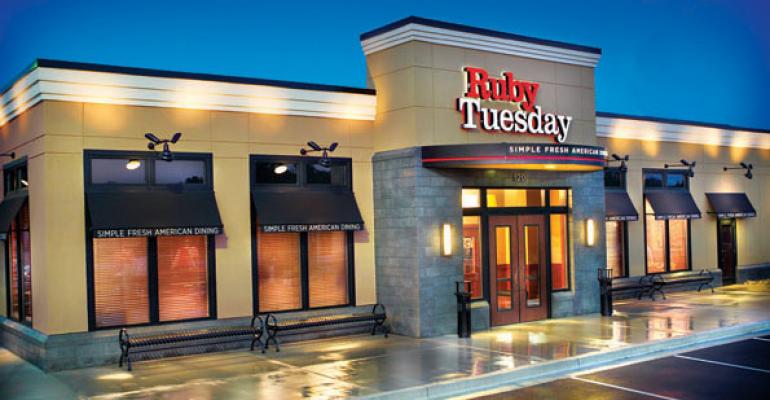Ruby Tuesday Inc. will begin testing tabletop tablets early this fall, joining a growing number of casual-dining brands using the technology, company executives said Thursday.
The Maryville, Tenn.-based company has signed an agreement with Dallas-based Ziosk to begin testing tablets in the second quarter, which will start in September, Todd Burrowes, Ruby Tuesday chief concept and chief operating officer, said in a fourth-quarter earnings call with analysts.
“We’ll have more information on the test results later this year,” Burrowes said.
James “JJ” Buettgen, Ruby Tuesday president, chairman and CEO, said the restaurant tablets will have pay-at-the table capabilities, which operators have found speeds the dining process for customers.
“It also has the capability to allow the ordering of drinks and dessert and menu items that you need,” Buettgen said. “And then it also has the ability to sign guests up for things like loyalty programs, and also has the capability to play video games for the table as well.”
Several casual-dining brands have deployed tablets over the past two years, including Applebee’s Neighborhood Grill & Bar, Chili’s Grill & Bar, Johnny Rockets, Red Robin Gourmet Burgers and recently Olive Garden, a division of Darden Restaurants Inc.
Buettgen said Ruby Tuesday will continue to work on its marketing programs, which will be led by new chief marketing officer David Skena.
Buettgen said he expects the marketing push to focus on digital, for which the company hired a new agency in May, as well as traditional avenues such as television, which was recently effective in increasing traffic during the July 7 introduction of the Grill House Steak menu platform.
“What we are trying to do is find the most effective and efficient ways to get out and re-attract the ‘families with kids’ segment, which by far was the single largest segment we lost when we repositioned the brand to be more upscale,” Buettgen told analysts.
In the fourth quarter, Ruby Tuesday prepaid $5.2 million of mortgage debt and simplified its debt structure by eliminating one mortgage lender with a payoff of $8.3 million of mortgage debt. The company made no further announcements about real estate, but analysts inquired as to the value of owned properties in Ruby Tuesday’s portfolio.
Jill Golder, Ruby Tuesday chief financial officer, said the company now has 303 properties that are owned. Of those, 206 are unencumbered.
Real estate values vary, she noted, explaining that in fiscal 2012 and 2014 the company made 37 sale-leasebacks of land and buildings that produced proceeds of $82.5 million, with an average real estate value per unit of $2.2 million.
In December 2013, 49 properties were put up as collateral. An independent appraisal valued those at $101.4 million, or at just more than $2 million per property.
In 2014, when the company decided to close 30 of its then 779 units, the underperforming sites each were sold for around $1 million, Golder said.
On Thursday, Ruby Tuesday reported net income of $4.3 million, or seven cents a share, for the fourth quarter ended June 2, compared with a loss of $881,000, or one cent a share, for the same period last year.
Fourth-quarter revenue fell 3.4 percent, to $296.8 million, from $307.3 million in the prior-year period.
In response to questions about its Lime Fresh concept, Buettgen said the company was focused on turning around its namesake Ruby Tuesday brand.
“That’s 90-some-odd percent of our efforts,” he said.
The company ended its fiscal year with 736 owned and franchised Ruby Tuesday restaurants in 44 states, 13 foreign countries and Guam. The company also owned 17 Lime Fresh restaurants and franchised another nine units in six states and the District of Columbia.
Contact Ron Ruggless at [email protected].
Follow him on Twitter: @RonRuggless

